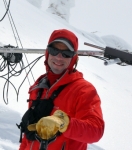Published in the January 2015 issue of Carve.
R: RESTRICTED. Under 17 requires accompanying parent or adult guardian.
An R-rated film includes “…adult themes, adult activity, hard language, intense or persistent violence or other elements, so that parents are counseled to take this rating very seriously.” Sidecountry is more serious than the most serious film because people of all ages can die in the sidecountry, especially youth that lack adult supervision or perspective. A young adult sneaking into a theater might face consequences if caught, but heading out-of-bounds of a ski area into the sidecountry is an entirely different level of risk.


